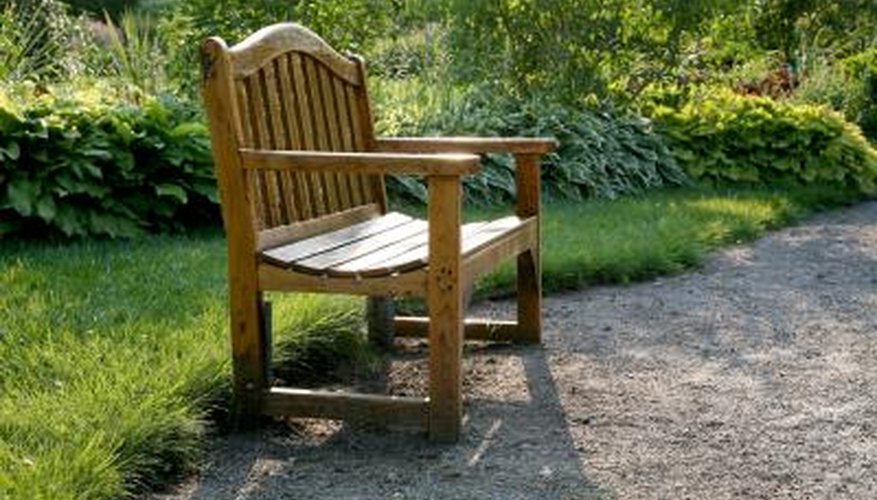Oak is a great choice for a garden bench. It is strong, durable and attractive. The natural tannic acid in oak wood makes it resistant to damage from the elements and insects. Like all wood, oak reacts to the environment -- temperature, humidity and rainfall in particular. Any untreated wood, even oak, is subject to rot and insect infestation if it's left exposed. Good routine care will keep an oak bench in great condition for decades.
- Oak is a great choice for a garden bench.
- Any untreated wood, even oak, is subject to rot and insect infestation if it's left exposed.
Cover your oak bench when it is not in use. Store it inside during the winter months.
Clean the oak bench twice a year. Hose off all the dirt and debris. Wash the bench, using a product designed for wood. Rinse. Let it dry completely. If the bench is exposed to salt or chlorine, wash it monthly.
Tighten any loose bolts or screws after the bench is clean. The joints on outdoor furniture work loose fairly quickly, so check these at least twice a year. Turn the bench over and examine the underside as well as the top.
- Clean the oak bench twice a year.
- Tighten any loose bolts or screws after the bench is clean.
Refinish the surface as necessary. The surface finish gives protection from weather and sunlight, so it should be smooth and even, with no bare wood exposed. Use a product designed for outdoor conditions. In a damp environment, a polyurethane finish is best. The legs of the bench may need to be refinished more often than the seat or back, especially if it is placed on grass. In a very dry environment, wood oil is a good choice, but it should be reapplied twice a year at least.
TIP
Clean spills off the bench as soon as they occur.
